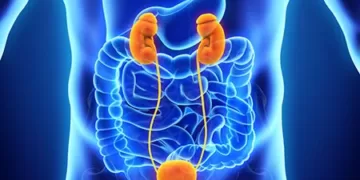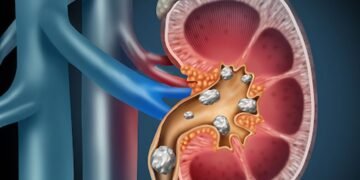Prostate Adenoma, Benign Prostatic Hyperplasia
Prostate adenoma, or the pathological enlargement of the prostate gland, is a benign hyperplasia. Hormonal imbalance, specifically the disturbance in the ratio of androgens and estrogens, plays a significant role in the development of prostate adenoma. Due to this and other unknown factors, the prostate gradually enlarges and compresses the urinary tract.
The urinary tract is an S-shaped, 20 cm long organ. Its function is to carry urine and semen. When the enlarged prostate (prostate adenoma) compresses the urinary tract, the process of urine excretion is disrupted. As a result, the bladder must overcome increasing resistance to expel urine. Due to excessive strain, the muscular wall of the bladder undergoes hypertrophy, thickening over time.
It is important for prostate adenoma to be diagnosed at an early stage to avoid urological complications such as urinary tract infections, kidney or bladder damage, and bladder stones.
Prostate Adenoma – Treatment and Regimen
If you are suffering from prostate adenoma, it is important to follow a specific regimen for diet and physical activity. You should avoid consuming spicy, sour, smoked, canned foods, and alcohol.
Your diet should be rich in dairy products and plant-based foods. Meat and eggs should be consumed in moderation. To prevent congestive processes in the pelvic organs, it is necessary to control gastrointestinal activity. This can be achieved through regular exercise and daily walking for 1 to 1.5 hours. This significantly reduces the risk of developing prostate adenoma.
A sedentary job, especially one that requires sitting for long periods, is particularly harmful. Additionally, you should never hold in urine. As soon as you feel the urge, you should urinate immediately, as holding urine may lead to acute urinary retention due to the stretching of the bladder walls. Following these guidelines can improve the condition of patients, but prostate adenoma cannot be fully cured this way.
The only radical treatment for advanced cases of prostate adenoma is adenectomy, which involves the surgical removal of the adenoma.
Modern medical technology at Karazanashvili Robotic Center – Prostate adenoma treatment is performed through plasma vaporization, a bloodless vaporization method. Patients are typically discharged on the second or third day after the procedure.
Prostate Adenoma Symptoms
- Difficulty or interruption in urination
- Weak urine stream
- Feeling of incomplete bladder emptying after urination
- Frequent urination (especially during nighttime)
- Pain or discomfort during urination
How Diagnosis is Performed
Diagnostic Tests for Prostate Adenoma
- PSA (Prostate-Specific Antigen)
- Creatinine
- Urinalysis (General Urine Test)
- Prostate Ultrasound (Echography)
- Uroflowmetry – measurement of urine flow rate
In addition, the following tests may be used for diagnosis:
- Cystoscopy – visual inspection of the bladder cavity using an endoscope
- Cystography – radiographic examination of the bladder using contrast agents
Karazanashvili Robotic Center offers prostate adenoma treatment using methods that comply with global medical standards.











